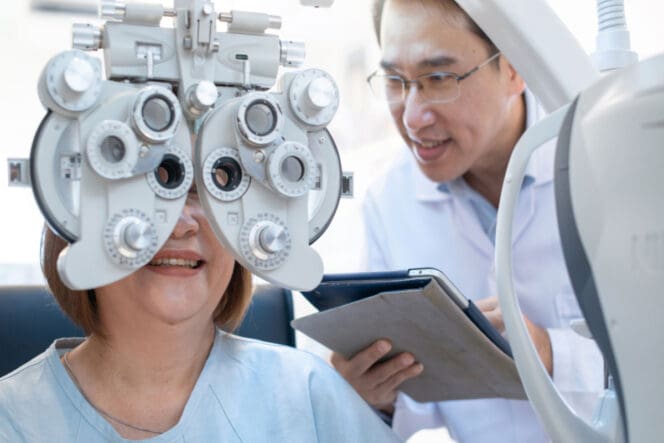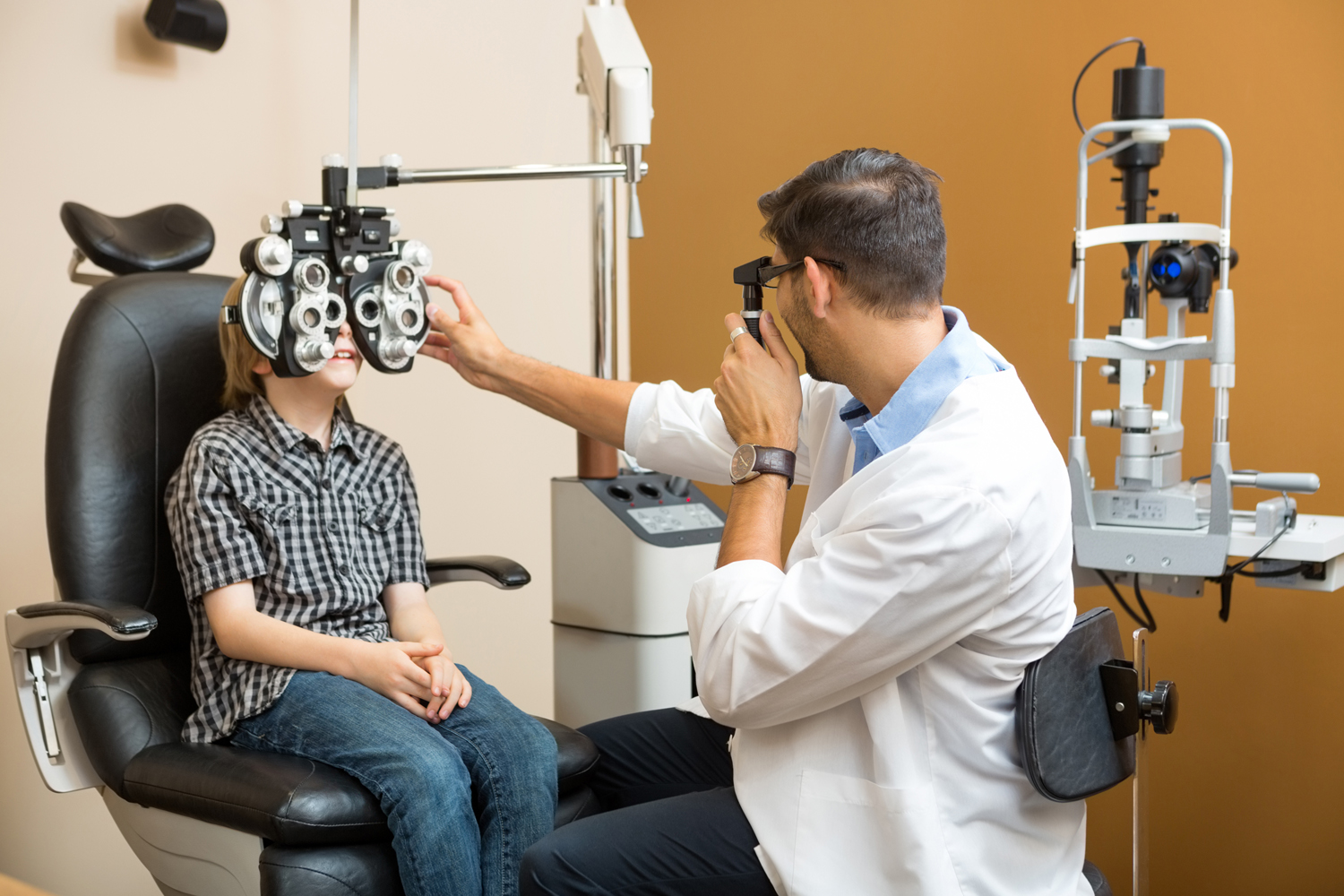Experience Personalized Care with Opticore Optometry in Chino
Experience Personalized Care with Opticore Optometry in Chino
Blog Article
Discovering the most up to date Technical Improvements in Optometry and What They Mean for Eye Doctors
From the precision of Optical Coherence Tomography to the nuanced understandings supplied by AI-driven analysis tools, these developments are establishing new criteria in individual analysis and therapy. As these improvements penetrate the practice, optometrists are encountered with the obstacle of embracing these tools to enhance person results.
Innovations in Diagnostic Equipment
Progressing the field of optometry, technologies in analysis tools have reinvented the means eye care specialists examine and identify ocular problems and visual impairments. The past years has observed substantial technical advancements, making it possible for even more comprehensive and accurate analyses.
An additional key advancement is the introduction of sophisticated corneal topography systems, which map the surface curvature of the cornea with accuracy. These tools are especially beneficial for fitting get in touch with lenses and detecting corneal problems. Electronic retinal imaging has changed conventional ophthalmoscopy, supplying detailed, breathtaking sights of the retina that assist in comprehensive aesthetic evaluations.
The growth of wavefront aberrometry has likewise been critical, allowing the evaluation of refractive mistakes with unmatched precision (Eye Doctor Optometrist). This technology aids in tailoring rehabilitative lenses and improving medical end results for refractive surgical procedures. Collectively, these diagnostic improvements encourage optometrists to supply exceptional patient care, guaranteeing early intervention and customized therapy methods, eventually improving visual health and wellness end results
AI in Person Administration
Structure on the structure of sophisticated diagnostic devices, the unification of fabricated knowledge (AI) in person administration stands for a transformative leap for optometry. AI systems are increasingly utilized to enhance performance, accuracy, and personalization in client care.
Moreover, AI-driven platforms facilitate structured individual communications and administrative processes. Automated scheduling, virtual appointments, and individualized follow-up strategies not just boost person complete satisfaction yet also maximize time administration for specialists. These systems can triage clients based upon the necessity of their conditions, guaranteeing that those in essential requirement obtain punctual focus.
Additionally, AI boosts decision-making by supplying optometrists with evidence-based suggestions and treatment pathways. By integrating data from digital health documents, AI devices offer understandings that notify clinical decisions, reducing the danger of mistakes and improving individual outcomes. As AI remains to advance, its function in person monitoring will likely expand, reshaping the landscape of optometric treatment.
Developments in Retinal Imaging
In the world of optometry, retinal imaging has actually seen exceptional technical improvements that are improving diagnostic abilities and client care. Developments such as Optical Comprehensibility Tomography (OCT) and fundus digital photography have actually changed just how optometrists evaluate the retina and envision.
Enhanced imaging techniques like OCT angiography are more refining diagnostic accuracy. This non-invasive method maps blood flow in the retina, offering vital insights into vascular health without the requirement for dye injections. Additionally, adaptive optics technology is being integrated right into retinal imaging systems to fix eye aberrations, providing unprecedented picture clearness. Such innovations assist in the recognition of min retinal modifications that might signify illness development.
Furthermore, innovations in man-made knowledge are augmenting retinal imaging by making it possible for automated evaluation of large datasets. These systems aid optometrists in determining patterns a sign of pathology, therefore enhancing diagnostic accuracy and effectiveness. Jointly, these advancements are changing retinal imaging into a keystone of contemporary eye treatment, enhancing results and increasing restorative possibilities.
Teleoptometry's Expanding Function
Teleoptometry is progressively becoming an essential component of eye treatment, driven by innovations in data and analysis tools. As optometry accepts digital transformation, teleoptometry facilitates remote consultations, enabling eye doctors to extend their solutions past standard limits. This is particularly useful in rural and underserved areas where access to specialized eye care is frequently restricted. By leveraging high-resolution video clip conferencing and advanced retinal imaging, eye doctors can carry out comprehensive eye exams from afar, ensuring timely medical diagnosis and therapy.
The assimilation of expert system (AI) more improves teleoptometry, allowing the analysis of aesthetic information and assisting in the detection of ocular problems such as glaucoma and diabetic retinopathy. AI-powered formulas can rapidly analyze complex imaging data, supplying eye doctors with valuable insights that strengthen scientific decision-making.
Furthermore, teleoptometry sustains connection of treatment with seamless combination with you can try here electronic health documents (EHRs), enabling eye doctors to preserve thorough individual backgrounds. This makes certain that people receive constant and personalized treatment even when seeking advice from with various practitioners.
Regardless of these advantages, difficulties stay, consisting of making sure information safety and security and handling individual assumptions. Nonetheless, teleoptometry represents a substantial stride towards more easily accessible, effective, and patient-centered eye treatment. As technology develops, its role Recommended Site is poised to expand even more.

Future Fads in Eye Care
A myriad of cutting-edge trends is readied to reshape the future of eye care, driven by technological improvements and the advancing demands of people. One substantial pattern is the integration of expert system (AI) in diagnostics, which guarantees to enhance the accuracy and performance of eye evaluations. AI formulas can assess vast quantities of information from retinal photos, potentially identifying conditions like diabetic person retinopathy and glaucoma earlier than traditional methods.
Additionally, tailored medicine is obtaining traction in optometry, with genetic screening educating personalized therapy plans. This approach aims to maximize person end results by tailoring treatments to specific genetic profiles. Wearable technology, such as wise contact lenses, is likewise on the perspective, using real-time surveillance of intraocular pressure or glucose degrees, hence providing constant insights into systemic and ocular wellness.
The fostering of augmented truth (AR) and virtual fact (VR) in training and patient education and learning is another arising fad. These innovations offer immersive experiences that can improve understanding and abilities both for optometrists and people. As these trends advance, eye doctors need to stay abreast of technological innovations to offer innovative treatment, guaranteeing improved individual outcomes and complete satisfaction in the dynamic landscape of eye treatment.
Verdict

Collectively, these diagnostic innovations equip optometrists to deliver superior person treatment, guaranteeing early treatment and tailored treatment approaches, eventually improving aesthetic health and wellness outcomes.

As these innovations proceed to evolve, optometrists need to adapt and integrate them right into method, ultimately enhancing workflow effectiveness and elevating the criterion of eye treatment provided to people.
Report this page